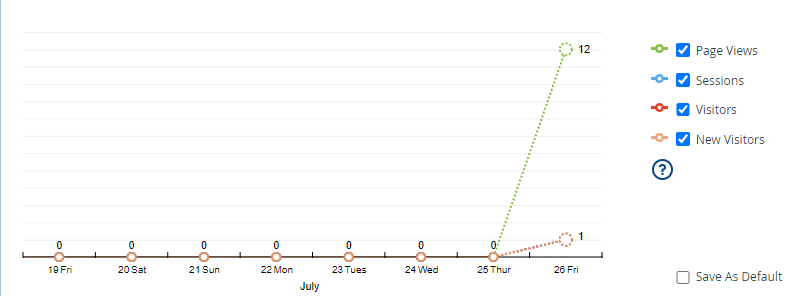PARTISIPASI PERAWAT DALAM PELAKSANAAN SISTEM JENJANG KARIR DI RSUD CHASBULLAH ABDUL MADJID: STUDI FENOMENOLOGI
DOI:
https://doi.org/10.32938/jsk.v4i01.2344Keywords:
Jenjang karir Perawat, Pengembangan Professional berkelanjutanAbstract
Latar Belakang: Sistem jenjang karier memberikan penghargaan kepada perawat berdasarkan pendidikan, dan kompetensi perawat.
Metode: Penelitian ini melibatkan 6 orang partisipan yang diambil dengan teknik purposive sampling.
Hasil: Hasil penelitian mengidentifikasi 5 tema utama yaitu 1) Pengembangan Profesional Berkelanjutan, 2) Sosialisasi Sistem Jenjang Karir, 3) Implementasi Jenjang Karir Belum Sesuai Dengan Beban Kerja Dan Kewenangan Klinis Perawat, 4) Dukungan Manajemen dan Pemimpin dalam Sistem Jenjang Karir Keperawatan, 5) Asuhan Keperawatan Profesional.
Rekomendasi: Rekomendasi dari hasil penelitian ini diharapkan Bagi Pimpinan/kepala ruangan diharapkan dapat meningkatkan program supervisi untuk dapat mengkawal kompetensi klinis yang sesuai dengan jenjang karir masing-masing perawat, sehingga perawat pelaksana dapat melaksanakan kompetensi klinis sesuai dengan kewenangan klinisnya
References
Agyepong, E. B. (2013) ‘Analysis of the Concept Continuing Education in Nursing Education’, 5(1), pp. 96–107.
Benner ’ s Stages of Clinical Competence Stage 1 : Novice Stage 2 : Advanced Beginner Stage 3 : Competent Stage 4 : Proficient Stage 5 : The Expert’ (2011), (1984), p. 2011.
Birkhead, S., Araldi, M. and Cummings, R. (2016) ‘A Model of Practical Nurse to Registered Nurse Educational Articulation : A Successful Approach to Advancing the Nursing Workforce’, Teaching and Learning in Nursing. Organization for Associate Degree Nursing., 11(4), pp. 152–156. doi: 10.1016/j.teln.2016.07.003.
Browder, B. and Mosier, M. (2015) ‘The Evaluation of a Professional Nurse Contribution Ladder in an Integrated Health Care System’, (June 2013).
Forman, J. et al. (2019) ‘Qualitative research methods : Key features and insights gained from use in infection prevention research’, American Journal of Infection Control. Elsevier Ltd, 36(10), pp. 764–771. doi: 10.1016/j.ajic.2008.03.010.
Gardenier, D., Jovanov, C. and Davlantes, T. B. (2019) ‘The Journal for Nurse Practitioners Should Nurse Practitioners Have Clinical Ladders ?’, TJNP: The Journal for Nurse Practitioners. Elsevier Inc., 15(9), pp. 620–621. doi: 10.1016/j.nurpra.2019.07.005.
Herawati, T. M. and Afifah, E. (2017) ‘PENGEMBANGAN PROFESIONAL KEPERAWATAN Pendahuluan Hasil Metode’, 20(1), pp. 40–47. doi: 10.7454/jki.v20i1.501.
Hippensteel, D. (2017) ‘Clinical Ladder Program Evolution : Journey From Novice to Expert to Enhancing Outcomes’, (August 2010). doi: 10.3928/00220124-20100503-07.
Hopia, H. et al. (2019) ‘European Journal of Oncology Nursing The voice of paediatric oncology nurses : A longitudinal diary study of professional development’, European Journal of Oncology Nursing. Elsevier, 42(July), pp. 28–35. doi: 10.1016/j.ejon.2019.07.009.
Kim, Y. H. et al. (2017) ‘Development and validation of a nursing professionalism evaluation model in a career ladder system’, pp. 1–15. doi: 10.1371/journal.pone.0186310.
Luck, L., Wilkes, L. and Baugh, J. O. (2015) ‘Treading the clinical pathway : a qualitative study of advanced practice nurses in a local health district in Australia’. BMC Nursing, pp. 1–8. doi: 10.1186/s12912-015-0105-7.
Nabavi, R. T. (2014) ‘Theories of Developmental Psychology Title : Bandura ’ s Social Learning Theory & Social Cognitive Learning Theory Razieh Tadayon Nabavi’, (January 2012).
Oyetunde, M. O. and Oluwafunke, K. I. (2015) ‘Professional Development and Career Pathway in Nursing’.
Parker, J. M. and Hill, M. N. (2017) ‘International Journal of Nursing Sciences A review of advanced practice nursing in the United States , Canada , Australia and Hong Kong Special Administrative Region ( SAR ), China’, International Journal of Nursing Sciences. Elsevier Ltd, 4(2), pp. 196–204. doi: 10.1016/j.ijnss.2017.01.002.
Price, S. and Reichert, C. (2017) ‘administrative sciences The Importance of Continuing Professional Development to Career Satisfaction and Patient Care : Meeting the Needs of Novice to Mid- to Late-Career Nurses throughout Their Career Span’, pp. 41–52. doi: 10.3390/admsci7020017.
Sanders, T. (2017) ‘Development and regulation of advanced nurse practitioners in the UK and internationally’, 32(14), pp. 43–51.
Shi, Y. and Li, J. (2016) ‘Research progress of hierarchical division in nursing ladder management in China’, Chinese Nursing Research. Elsevier Ltd, 3(3), pp. 109–112. doi: 10.1016/j.cnre.2016.06.012.
Sutton, J. and Austin, Z. (2015) ‘Qualitative Research : Data Collection , Analysis , and Management’, 68(3), pp. 226–231.
Tian, X. et al. (2015) ‘Research Status and Competence of Clinical Nursing Specialist and Construction on Core Competence Model for Osteoporosis Specialized Nurse in Mainland China’, 8(1), pp. 152–164.
Tutik, R., Hariyati, S. and Fujinami, Y. (2017) ‘Correlation between Career Ladder , Continuing Professional Development and Nurse Satisfaction : A Case Study in Indonesia’, 10(3), pp. 1490–1497.
Undang-undang Republik Indonesia No. 38 tahun 2014 tentang Keperawatan
Additional Files
Published
Issue
Section
License
This journal lisence You are free to:
- Share — copy and redistribute the material in any medium or format for any purpose, even commercially.
- Adapt — remix, transform, and build upon the material for any purpose, even commercially.
- The licensor cannot revoke these freedoms as long as you follow the license terms.













